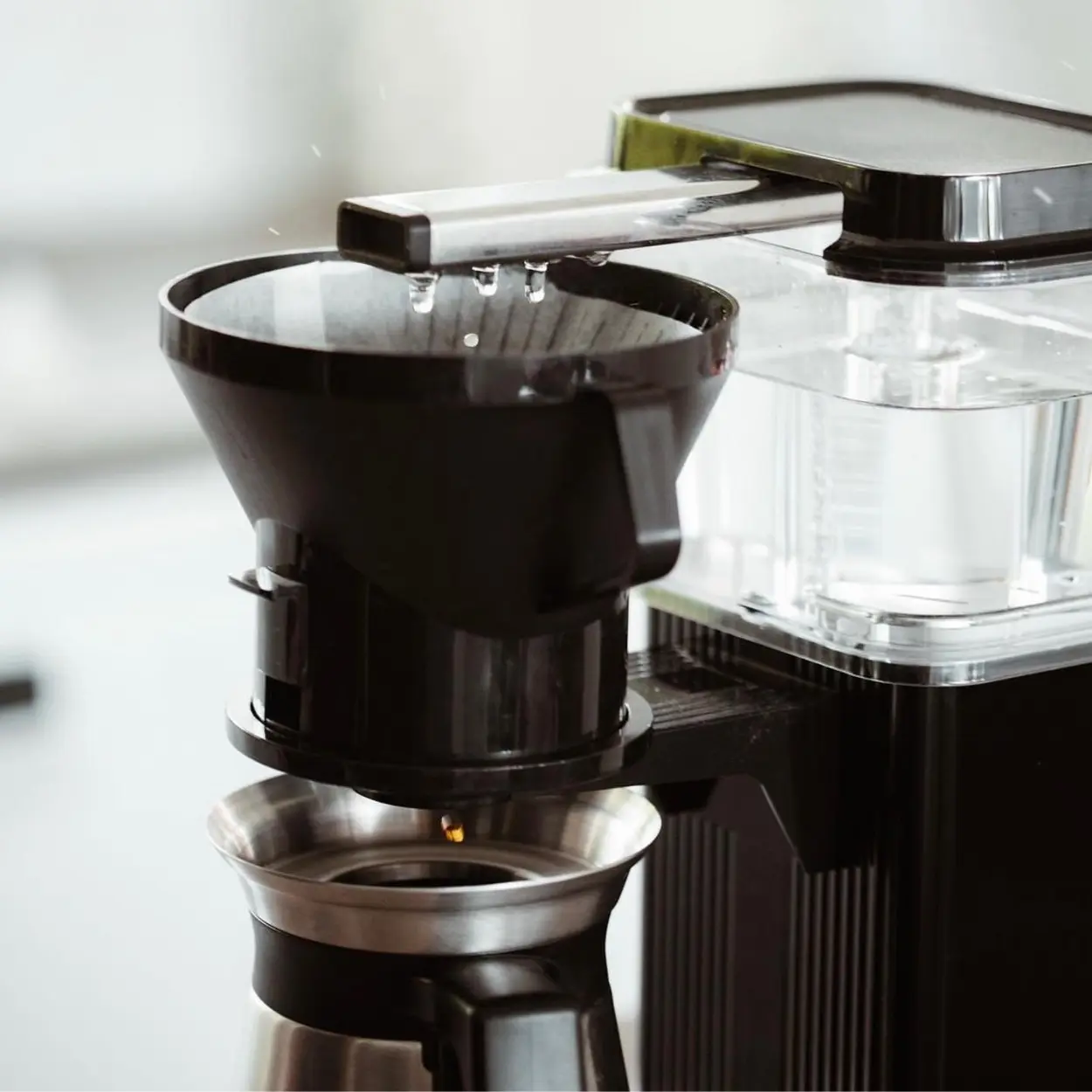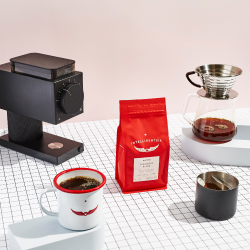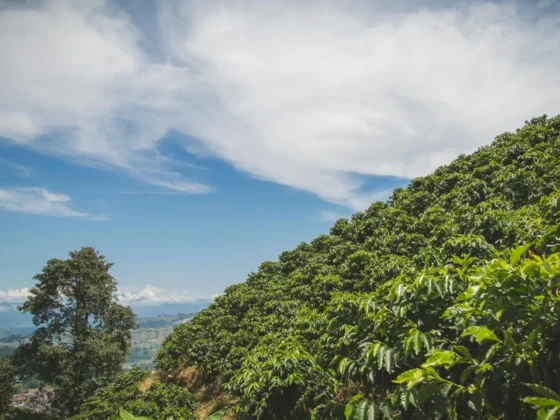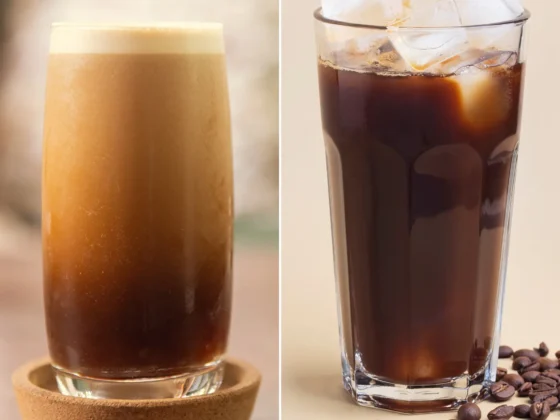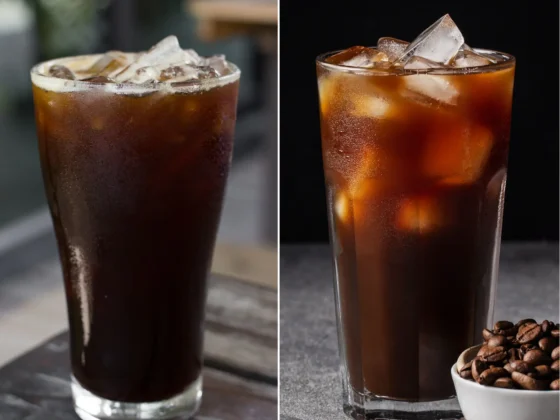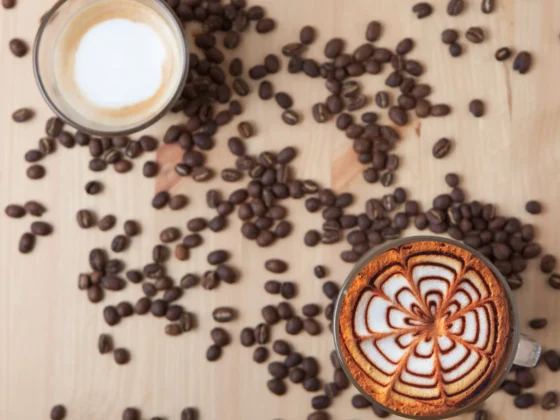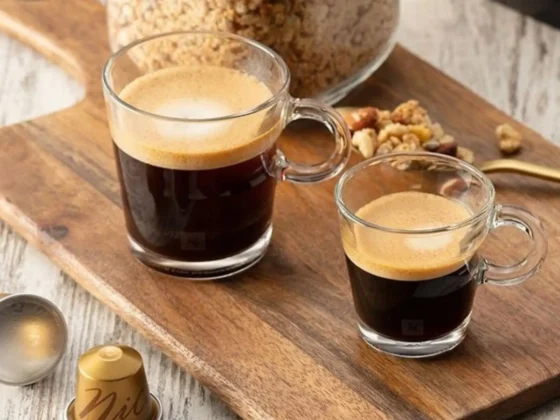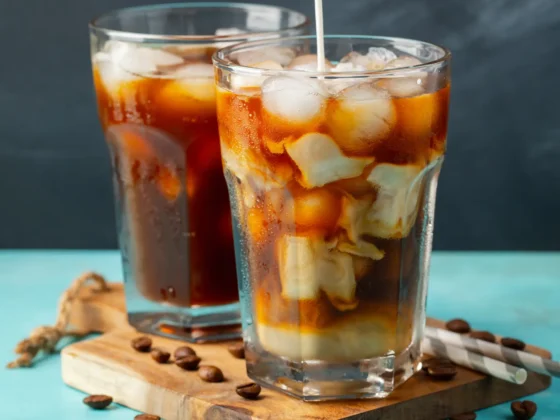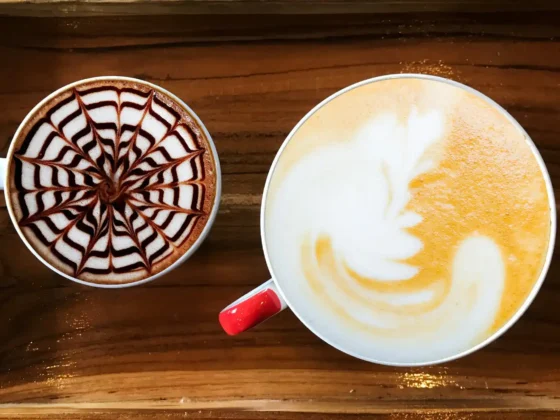In the vast world of coffee, the debate between Drip Coffee vs Espresso continues to brew, captivating both casual drinkers and aficionados alike. While some are drawn to the gentle allure of a drip coffee’s mild flavors, others are enraptured by the intense burst of an espresso shot. But what truly sets these two methods apart, and which might be the perfect cup for you? Journey with us as we explore the nuances, techniques, and unique qualities of these beloved brewing methods. Whether you’re seeking clarity or simply wish to deepen your appreciation, this exploration promises insights for every coffee enthusiast.
Skip the reading and opt for the article’s audio rendition below.
- Introduction & Key Takeaway
- https://app.mysoundwise.com/tracks/16987984178711011e.mp3
- What is Drip Coffee?
- https://app.mysoundwise.com/tracks/16987984430333081e.mp3
- What is Espresso?
- https://app.mysoundwise.com/tracks/16987984657971057e.mp3
- Brewing Techniques
- https://app.mysoundwise.com/tracks/16987984885975027e.mp3
- Taste and Aroma
- https://app.mysoundwise.com/tracks/16987985137370649e.mp3
- Caffeine Content
- https://app.mysoundwise.com/tracks/16987985425742705e.mp3
- Serving Styles
- https://app.mysoundwise.com/tracks/16987985757525413e.mp3
- Pros and Cons
- https://app.mysoundwise.com/tracks/16987986089041904e.mp3
- Conclusion & FAQs
- https://app.mysoundwise.com/tracks/16987986782761501e.mp3
Espresso vs Drip Coffee: Key Takeaway
- Intensity & Volume: While espresso delivers a concentrated burst of flavor in a small shot, drip coffee provides a milder taste over a larger volume, making it ideal for leisurely sipping.
- Brewing Time & Technique: Espresso is produced by pushing warm water through fine coffee grounds using high pressure over a brief period, resulting in a rich and robust shot. In contrast, drip coffee relies on gravity, allowing water to slowly pass through coarser grounds, extracting flavors over a longer period.
- Versatility in Drinks: Espresso serves as the foundational base for a plethora of coffee beverages, from lattes to cappuccinos. Drip coffee, while delightful on its own, is less commonly used as a base for mixed drinks.
- Equipment & Investment: Quality espresso machines often come with a steeper price tag and may require a steeper learning curve. Drip coffee makers, conversely, range from simple manual pour-overs to automated machines, generally offering an easier and often more affordable entry point.
- Caffeine Concentration: A standard shot of espresso might have more caffeine per ounce compared to drip coffee, but a typical serving of drip coffee usually delivers more total caffeine due to its larger volume.
What is Drip Coffee?
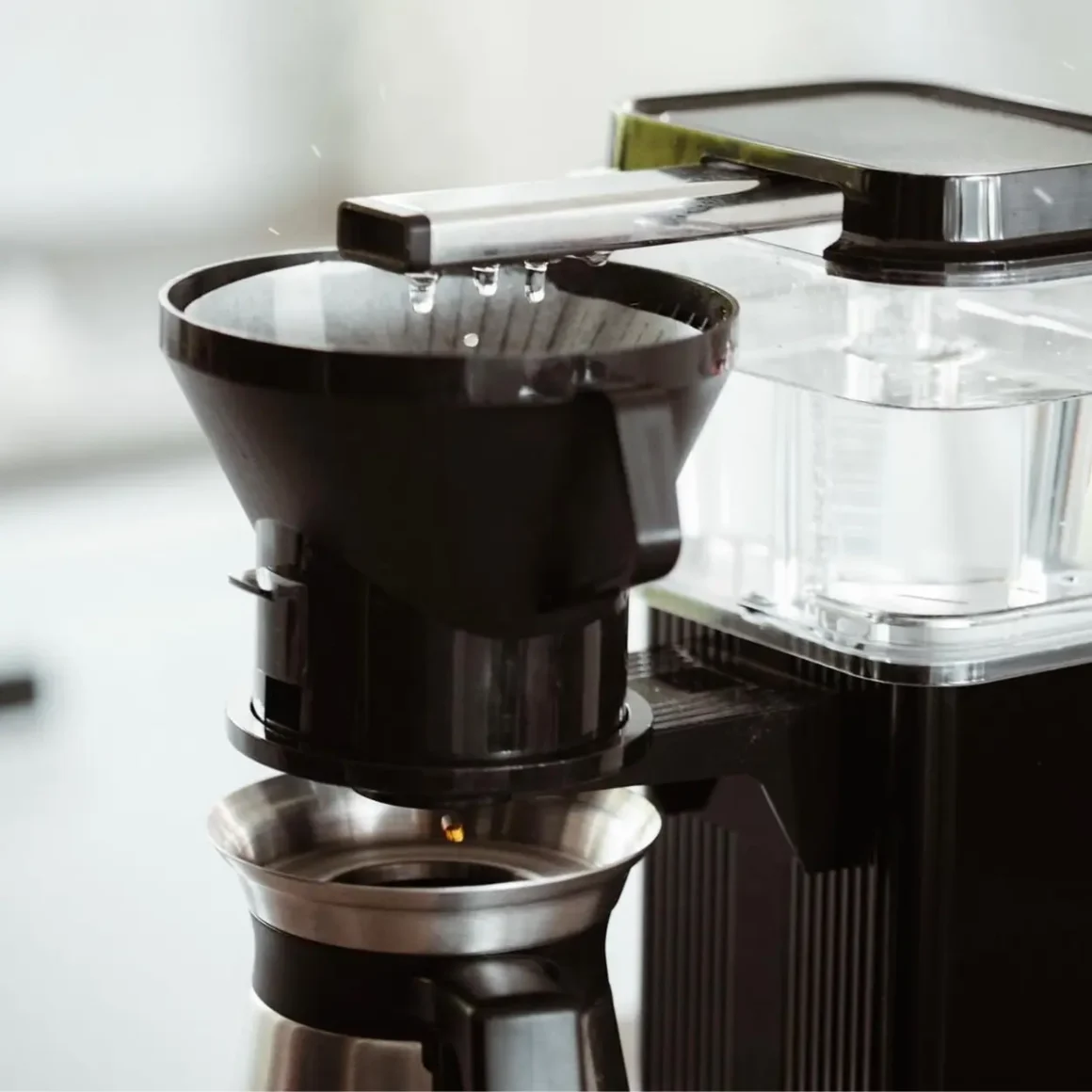
Drip coffee, also known as filtered coffee, is a method of making coffee where hot water is passed over coffee grounds, allowing the flavors to be extracted gradually. This method involves water dripping through the grounds at a slow pace, either through natural gravity or forced by a machine, into a carafe or coffee pot. The result is a clear, aromatic coffee, often considered the best coffee by many enthusiasts for its ability to capture the full spectrum of the beans’ flavors.
The Art of Drip Brewing
Drip brewing is an art, honing in on the perfect balance of grind size, water temperature, and brewing time to extract the quintessential flavors of the coffee beans, including arabica coffee which is known for its smooth and flavorful profile. This can be done manually or using automated machines.
Pour-Over Coffee
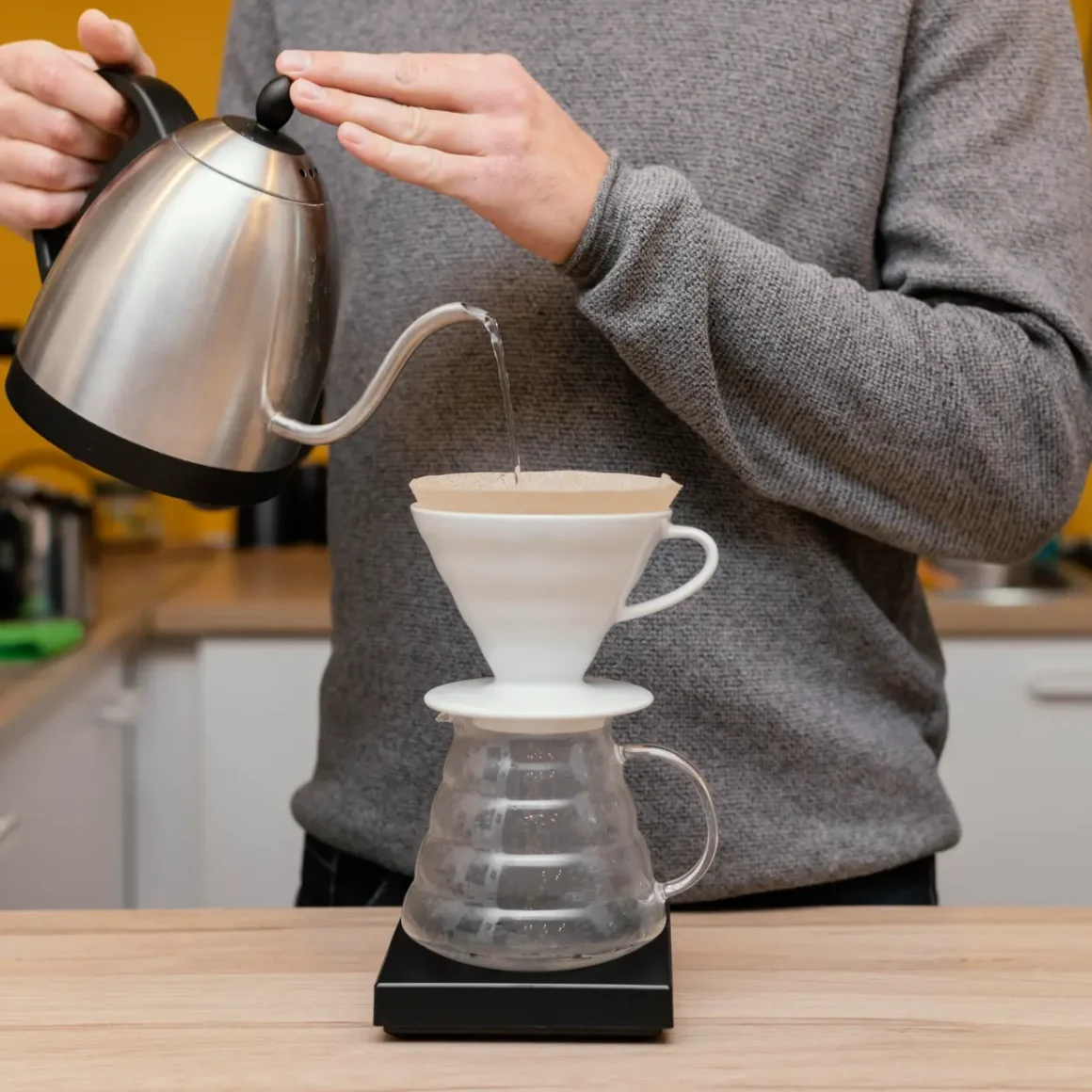
Embracing the hands-on approach to brewing, pour-over coffee gives individuals the reins to their brewing destiny.
- Process: Pour-over coffee is a manual drip brewing method. The process involves adding warm water to coffee beans in a filter. The water then drips through the grounds and filters, into a vessel below.
- Benefits: This method offers mastery of the brew time and water temperature, ensuring a more consistent extraction.
- Taste: Typically results in a clean and vibrant flavor profile, accentuating the intricate nuances of the coffee beans.
Cold Brew

Venturing into the realm of patience and subtlety, cold brew offers a refreshing twist on traditional coffee preparations.
- Process: Unlike traditional drip coffee methods, cold brew entails soaking coarsely ground coffee beans in cool water over a prolonged duration, typically ranging from 12 to 24 hours. (1)
- Benefits: As cold brewed coffee uses time rather than heat to extract flavors, it results in a coffee that’s less acidic and smoother.
- Taste: This method produces a concentrated coffee with a sweet, mellow flavor that can be diluted with water, milk, or a milk alternative to preference.
Drip Coffee: Flavor Profile
The flavor profile of this delectable beverage is often described as clean, with highlighted notes that vary depending on the origin of the beans. Due to the gradual extraction method:
- Clarity: This drink showcases the distinct flavors and aromas of the coffee bean. This clarity helps distinguish subtle notes like citrus, berry, or chocolate that might be present in the beans.
- Acidity & Balance: Properly brewed, this beverage presents a balanced acidity, neither too sharp nor flat, giving it a bright character.
- Body: Typically, this concoction will have a medium body – not as dense as espresso coffee but more substantial than some other brewing methods.
Drip Coffee Makers: Types and Features
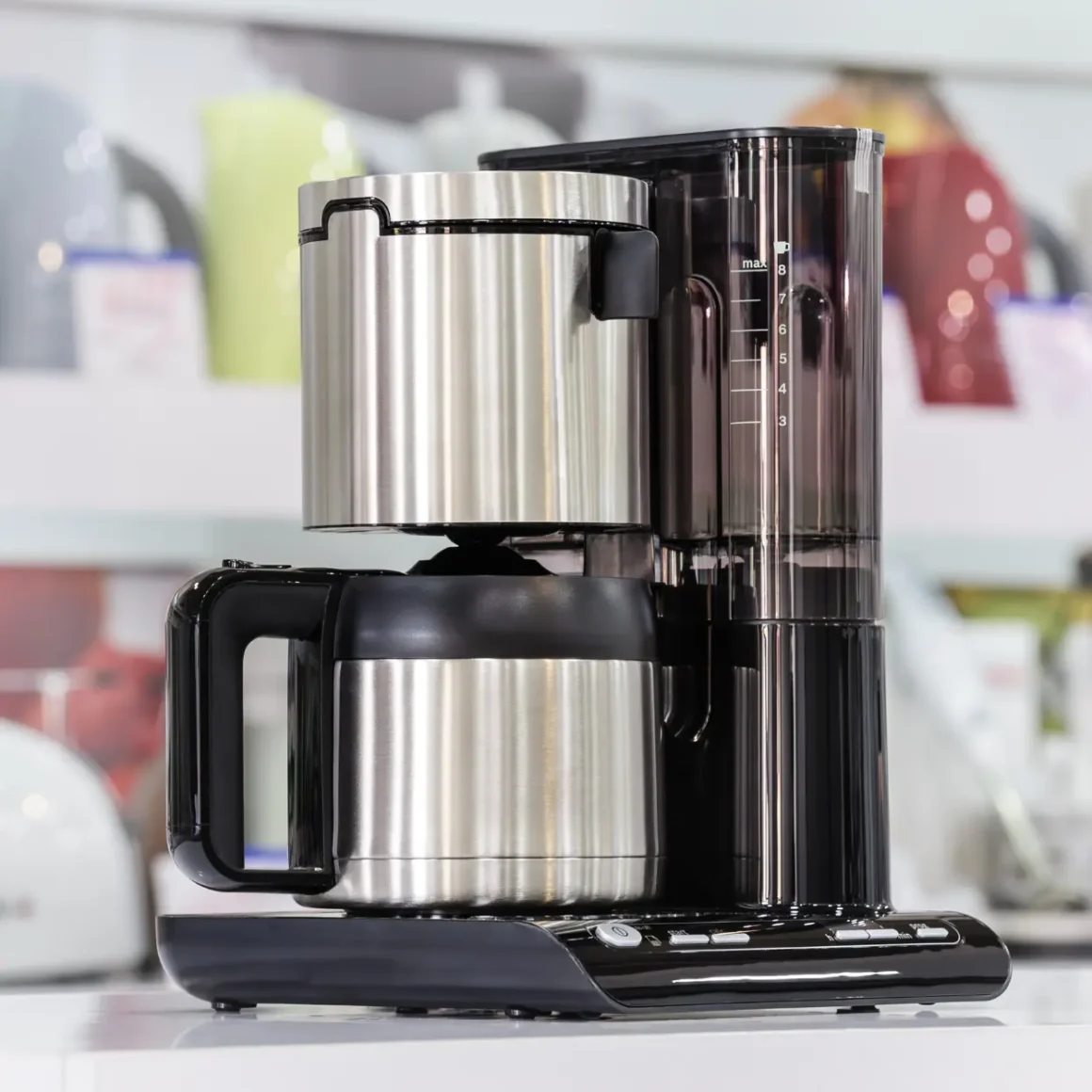
Drip coffee makers come in various shapes, sizes, and with a myriad of features tailored to different preferences:
- Automatic Drip Coffee Makers: These are the typical ones in households and offices. They heat water and pour it over the coffee grounds, letting the brewed coffee drip into a pot below. Features can include programmable timers, brew-strength settings, and auto-shutoff.
- Manual Drip Coffee Makers (e.g., Pour-Over): These require a more hands-on approach but offer a greater mastery of the brewing process. Examples include the Chemex and V60.
- Thermal Coffee Makers: These come with a thermal carafe instead of a glass pot, keeping coffee hot for longer without a heating plate which can alter the coffee’s flavor.
- Special Features: Some machines offer advanced features like integrated grinders for fresh coffee grounds every time, water filtration systems to ensure purity or even smart technology for remote brewing.
Whether you prefer the nuanced control of pour-over, the refreshing taste of cold brewed coffee, or the convenience of an automatic machine, there’s a method and machine out there to suit every taste.
What is Espresso?

Espresso is a concentrated coffee brew that originates from Italy and is made by forcing warm water through finely-ground coffee under high pressure. Its strong and bold character, coupled with its rich crema on top, distinguishes it from other coffee brewing methods. Espresso is not only a standalone drink but also serves as the base for numerous coffee beverages like cappuccinos, lattes, and mochas.
Mastering the Espresso Shot
Espresso is often considered the pinnacle of coffee craftsmanship, and achieving the perfect shot requires a combination of skill, precision, and a deep understanding of the brewing process. Whether you’re a seasoned barista or an at-home coffee enthusiast, here are some invaluable tips and advice to help you master the art of pulling the perfect espresso shot.
- Start with Quality Coffee Beans: The foundation of a great espresso shot is high-quality coffee beans. Look for fresh, recently roasted beans from reputable sources.
- Invest in a Good Espresso Machine: A reliable espresso machine is essential for consistency, look for one that allows you to control temperature, pressure, and extraction time.
- Grind Your Coffee Fresh: Grind your coffee just before brewing to preserve freshness and flavor. Espresso requires a fine grind that’s consistent in size.
- Practice and Refine Your Technique: Becoming a master at pulling espresso shots takes time and practice. Experiment with different beans, grind settings, and techniques.
- Taste and Adjust: Taste your espresso shots regularly to identify any off-flavors or inconsistencies. Adjust variables like grind size, dose, and extraction time to fine-tune your shots.
- Enjoy the Journey: Remember that mastering the art of espresso is an ongoing journey. Embrace the process of learning and refining your skills.
Espresso vs Drip: Flavor Showdown
When comparing drip coffee vs espresso, several distinct differences emerge:
- Concentration: Espresso is far more concentrated than drip coffee, delivering a bold flavor in a small amount.
- Brewing Time: This drink takes mere seconds to brew due to the high pressure, whereas filtered coffee requires minutes.
- Volume: Drip coffee is typically served in larger quantities compared to the small, intense shot of espresso.
- Flavor: This beverage often has a deeper, richer flavor profile, emphasizing the nuances of the coffee bean. In contrast, filtered coffee presents a milder, clearer taste.
- Usage: Espresso acts as the base for many other coffee drinks, whereas drip coffee is usually consumed as-is.
Lungo vs. Espresso
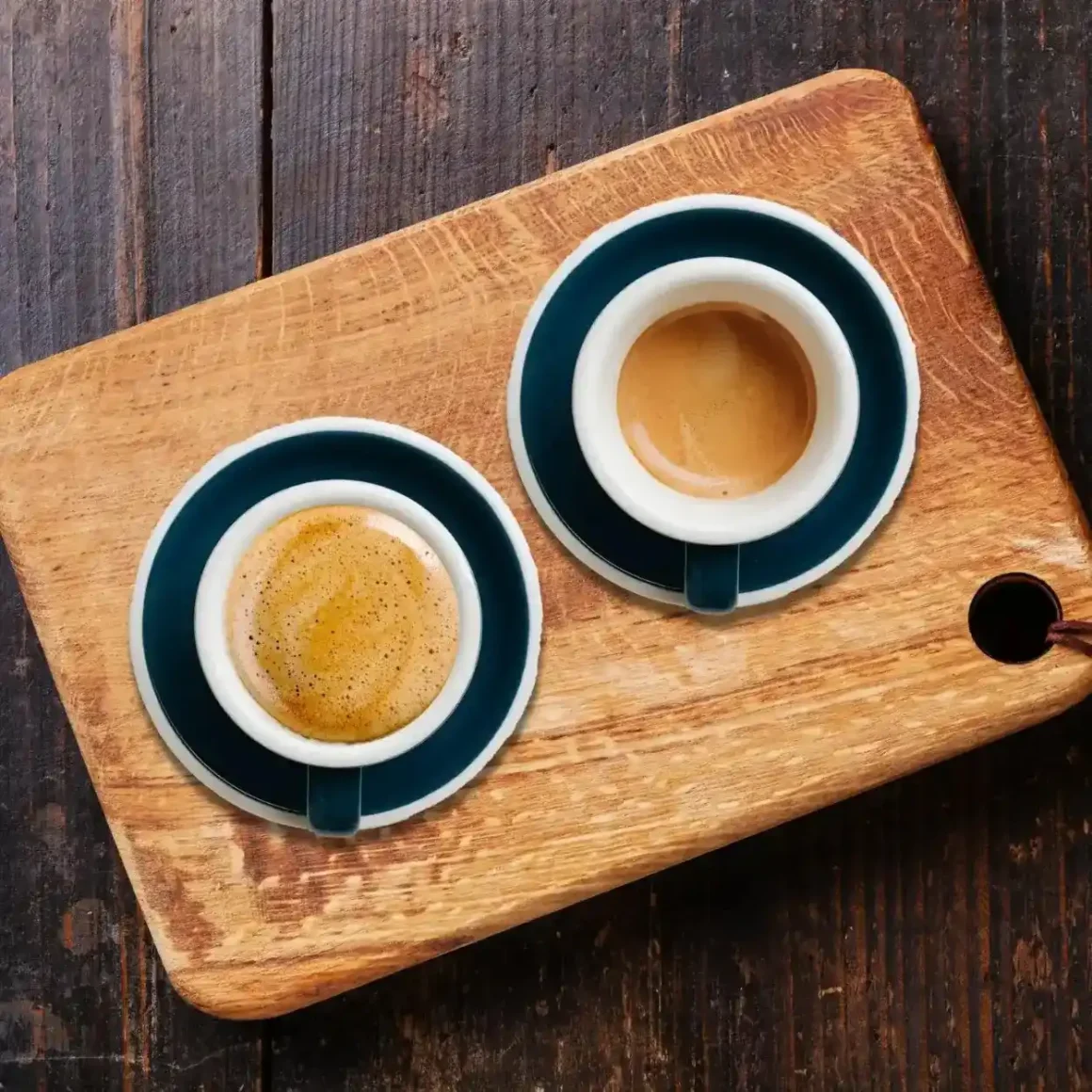
In the lungo vs espresso debate, it’s essential to understand that both originate from the same brewing method but differ in extraction time and volume:
- Extraction: Lungo, often referred to as long shot coffee, involves a longer extraction time than espresso. This means more water is passed through the coffee grounds.
- Volume: A lungo is typically larger in volume than a standard espresso shot, often double the size.
- Flavor: Due to the extended extraction, a lungo is less concentrated and can sometimes have a slightly bitter taste compared to the robust flavor of a standard espresso.
Espresso Machines: Choosing the Right One
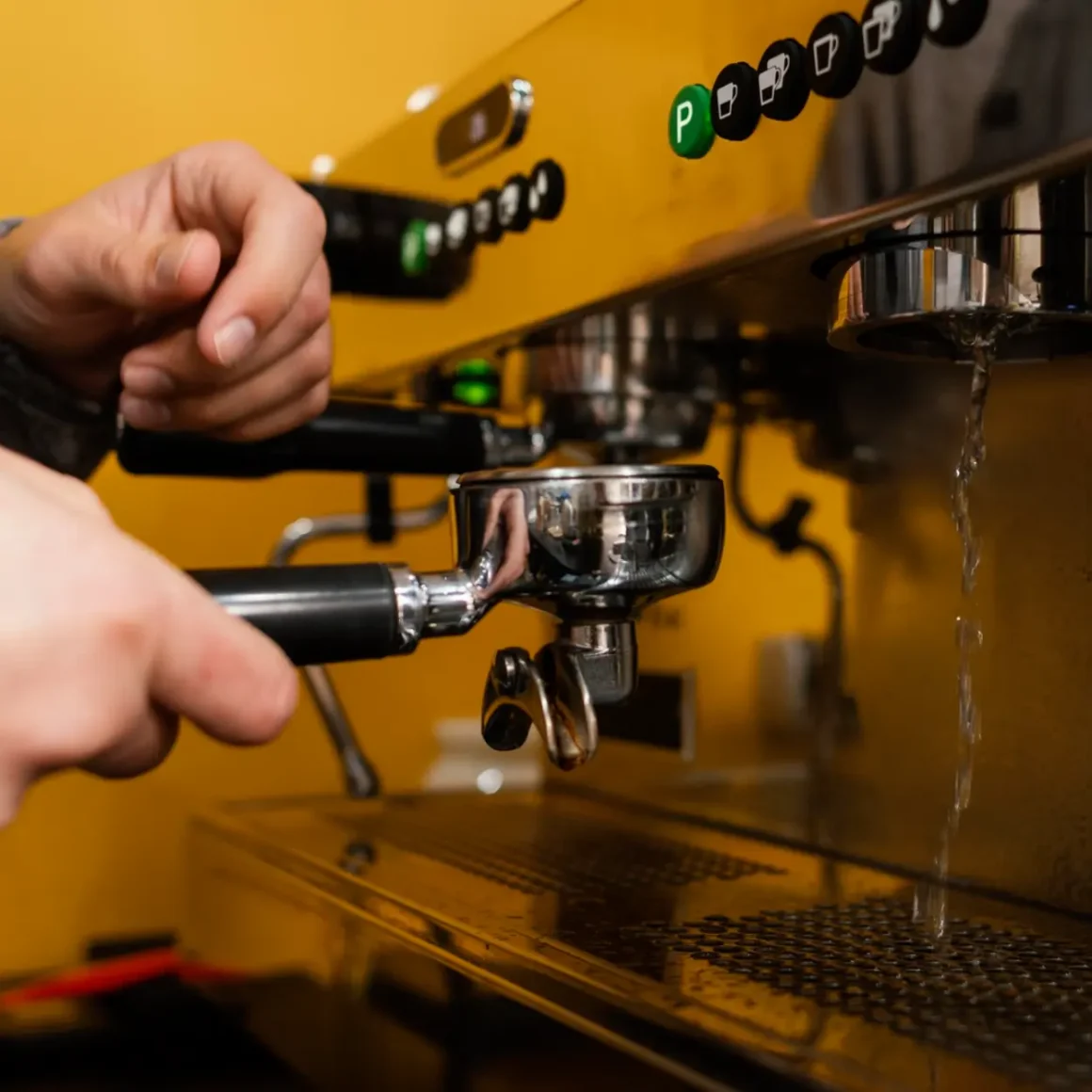
Choosing the right espresso coffee machine can elevate your coffee experience:
- Manual Espresso Machines: These allow the user to control every aspect of the brewing process, from tamping the grounds to controlling the water pressure.
- Semi-Automatic Machines: Offering a balance between manual control and automation, these machines control the water pressure but allow the user to decide the extraction time.
- Fully Automatic Machines: These machines automate the entire brewing process, ensuring consistency. They’re ideal for those who want a quality cup of this delectable drink without the hands-on approach.
- Capsule Machines: Using pre-packaged coffee capsules, these machines are convenient and offer a wide variety of flavors but might not satisfy purists.
- Features to Consider: Look for machines with integrated grinders, adjustable pressure settings, and temperature control to customize how you drink espresso.
Whether you’re diving deep into the nuances of espresso or just starting your journey, understanding its intricacies can help appreciate every sip. From mastering the perfect shot to choosing the right machine, there’s an art and science behind this beloved brew.
Drip Coffee vs Espresso: Brewing Techniques
The world of coffee is vast, with a myriad of techniques to bring out the best flavors in every bean. Two of the most popular methods, drip brewing, and espresso brewing, offer distinct experiences and results. Whether you’re a fan of the calm, deliberate pace of drip coffee or the quick, intense burst of espresso, understanding these methods can elevate your coffee experience.
Slow and Steady Wins the Race: Drip Brewing
Drip coffee brewing is a method that has stood the test of time, offering convenience and consistency to coffee lovers around the world. To truly savor the rich flavors of your coffee beans, it’s essential to master the art of drip brewing. Here, we’ll explore the key techniques and tips that will help you perfect your drip coffee game.
Drip Coffee Brewing Techniques:
To elevate your drip coffee game and achieve the best flavor from your beans, consider these techniques and tips:
- Selection of the beans: Look for beans that are suited to your taste preferences, whether it’s a light, medium, or dark roast.
- Measuring coffee and water: Use a kitchen scale to measure both coffee and water accurately. A common ratio is 1 to 2 tablespoons of coffee per 6 ounces (180ml) of water.
- Choosing the Right Grind Size: For drip coffee, a medium grind is typically ideal. The grind should be uniform to ensure even extraction.
- Optimizing the brewing time: Drip coffee should generally take around 4-5 minutes to brew. Adjust the grind size or coffee dose to control the brewing time.
- Experimenting with Brewing Methods: Drip coffee can be made with various equipment, such as automatic drip machines, pour-over cones, or siphon brewers.
- Tasting and Adjusting: Taste your coffee and take notes on its flavor. Adjust variables like grind size, coffee-to-water ratio, and brewing time accordingly.
Drip Coffee Machine Maintenance:
To ensure your drip coffee machine remains in peak condition, routine maintenance is a must.
- Cleaning: Regular cleaning, including decalcification, ensures optimal performance and prevents mineral build-up.
- Filter Replacement: Depending on the machine, filters should be replaced or cleaned to ensure a clean brew and prevent off-flavors.
- Water Quality: Using filtered water can enhance the coffee’s taste and extend the machine’s lifespan.
By embracing these drip coffee brewing techniques and adopting proper machine maintenance, you’ll be well on your way to consistently enjoying a cup of coffee that reflects the full potential of your chosen beans, ensuring that slow and steady truly wins the race in the world of coffee brewing.
Quick and Intense: Espresso Brewing
Espresso, renowned for its concentrated flavor and rich crema, is a coffee aficionado’s delight. Brewing the perfect shot of espresso is an art that requires precision, the right equipment maintenance, quality coffee beans, and a deep understanding of the process. In this guide, we will explore the techniques to help you master the quick and intense world of espresso brewing.
Espresso Brewing Techniques:
Achieving the perfect shot of espresso is an art that requires the right equipment, quality coffee beans, and a deep understanding of the brewing process.
- Selection of Quality Coffee Beans: Start by choosing high-quality, freshly roasted coffee beans that match your taste preferences.
- Measuring the Coffee: Determine the coffee-to-water ratio. A standard espresso shot uses 18-20 grams of coffee grounds.
- Grinding the Coffee: If you have whole beans, grind them to a fine consistency, similar to table salt. Espresso requires a uniform and fine grind.
- Preheating Your Espresso Machine: Turn on your espresso machine and allow it to fully preheat. This ensures a stable and consistent brewing temperature.
- Dosing and Tamping: Dose the measured coffee grounds into the portafilter basket. Tamp the grounds evenly and firmly with a tamper to create a level surface. Aim for consistent pressure.
- Brewing the Espresso Shot: Start the shot by initiating the extraction process on your espresso machine. Ideally, a shot should take around 25-30 seconds to brew, including a few seconds of pre-infusion (initial water contact).
- Serve and Enjoy: Once the shot is complete, pour the espresso into a pre-warmed cup. Sip and savor your perfectly brewed espresso. You can enjoy it as is or use it as a base for various espresso-based drinks like café cappuccino, and café latte.
Espresso Machine Maintenance
The intricate components of espresso machines require diligent attention for the best shots and long-lasting use.
- Regular Cleaning: Due to the oily nature of espresso beans, it’s essential to clean machines frequently to prevent residue build-up, especially in the group head and portafilter.
- Descaling: Espresso machines are prone to mineral deposits, especially in hard water areas. Regular descaling ensures the machine operates efficiently.
- Grinder Maintenance: For machines with integrated grinders, periodic cleaning ensures a consistent grind and prevents stale flavors.
By following these espresso brewing techniques and maintaining your espresso machine diligently, you can consistently produce quick, intense, and delightful shots of espresso that capture the essence of your chosen coffee beans.
Pour Over vs Espresso: Precision Matters
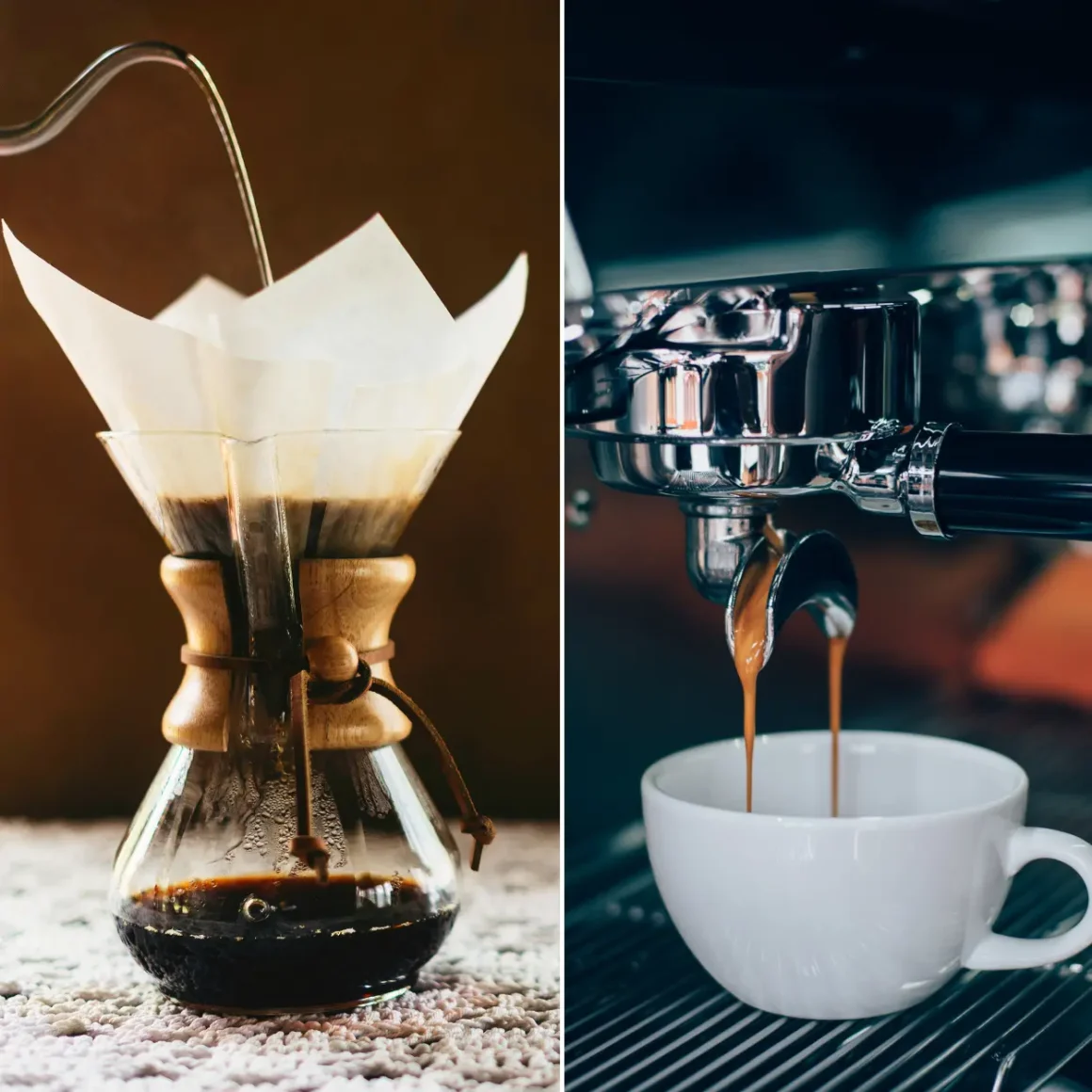
The age-old debate of espresso vs pour over is not just about flavor, but also about the precision involved in crafting each brew. Both methods demand specific techniques and deliver distinct results, appealing to different coffee palates and preparation preferences.
Pour Over
Delving into the world of artisan coffee brewing, the pour-over method is a testament to the craftsmanship of coffee making.
- Equipment: Pour-over coffee brewing requires minimal equipment—a pour-over cone, paper or metal filter, a kettle for precise pouring, and freshly ground coffee beans.
- Precision in Grind Size: Achieving the perfect pour-over coffee begins with selecting the appropriate grind size. For this method, a medium-coarse to medium grind is ideal. Precise grinding ensures proper extraction and prevents over-extraction.
- Brewing Process: Precision in pour-over brewing lies in the meticulous pouring technique. Slowly and steadily, hot water is poured over the coffee grounds in a spiral motion. This method allows for full saturation and even extraction of the coffee bed.
Espresso
Embarking on a journey into the concentrated realm of coffee, espresso packs a punch in a small package.
- Equipment: Espresso brewing involves a specialized espresso machine, a grinder, a tamper, and finely ground coffee beans.
- Precision in Grind Size: Espresso demands a precise, fine grind, akin to table salt. Consistency in grind size ensures a uniform extraction and the formation of a rich crema.
- Brewing Process: Espresso machines are designed for precise control over key variables—temperature, pressure, and extraction time. The machine forces hot water through the finely ground coffee at high pressure, resulting in a concentrated shot.
Ultimately, the choice between pour-over and espresso depends on personal preferences, time constraints, and the desired flavor experience. Pour-over offers a slow and contemplative approach, while espresso provides a quick and intense coffee experience.
Espresso vs Drip Coffee: Taste and Aroma
Coffee, with its diverse brewing methods, offers a vast spectrum of flavors and aromas. Distinguishing between the taste profiles of different coffee styles can provide an enriching experience for aficionados and casual drinkers alike. The battle between drip coffee and espresso is particularly captivating, with both boasting unique aromatic and taste profiles.
Drip Coffee Aromatics: A Whiff of Nostalgia
Drip coffee is often associated with morning routines and comforting memories, evoking a sense of nostalgia for many.
Mild and Balanced
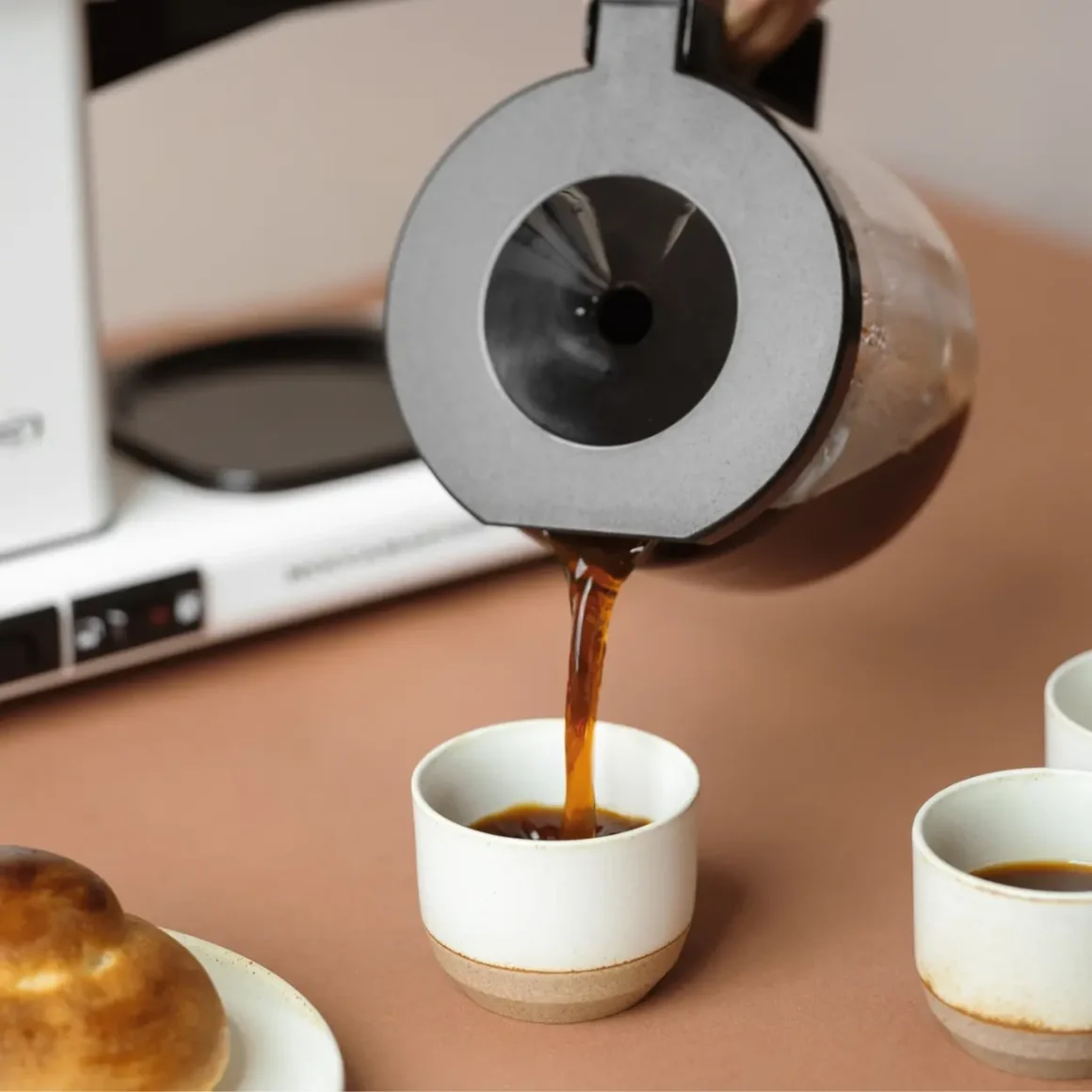
Diving into the soothing characteristics of filtered coffee, one encounters its inherent equilibrium of flavors.
- Taste Profile: This beverage, due to its longer brewing time and larger volume, typically presents a milder and more balanced flavor than espresso. It allows coffee drinkers to savor the subtleties of their chosen bean.
- Brewing Time: The slow extraction of flavors over several minutes ensures a brew that’s neither too strong nor too weak, making it an ideal choice for those who enjoy a more laid-back coffee experience.
Aromatics
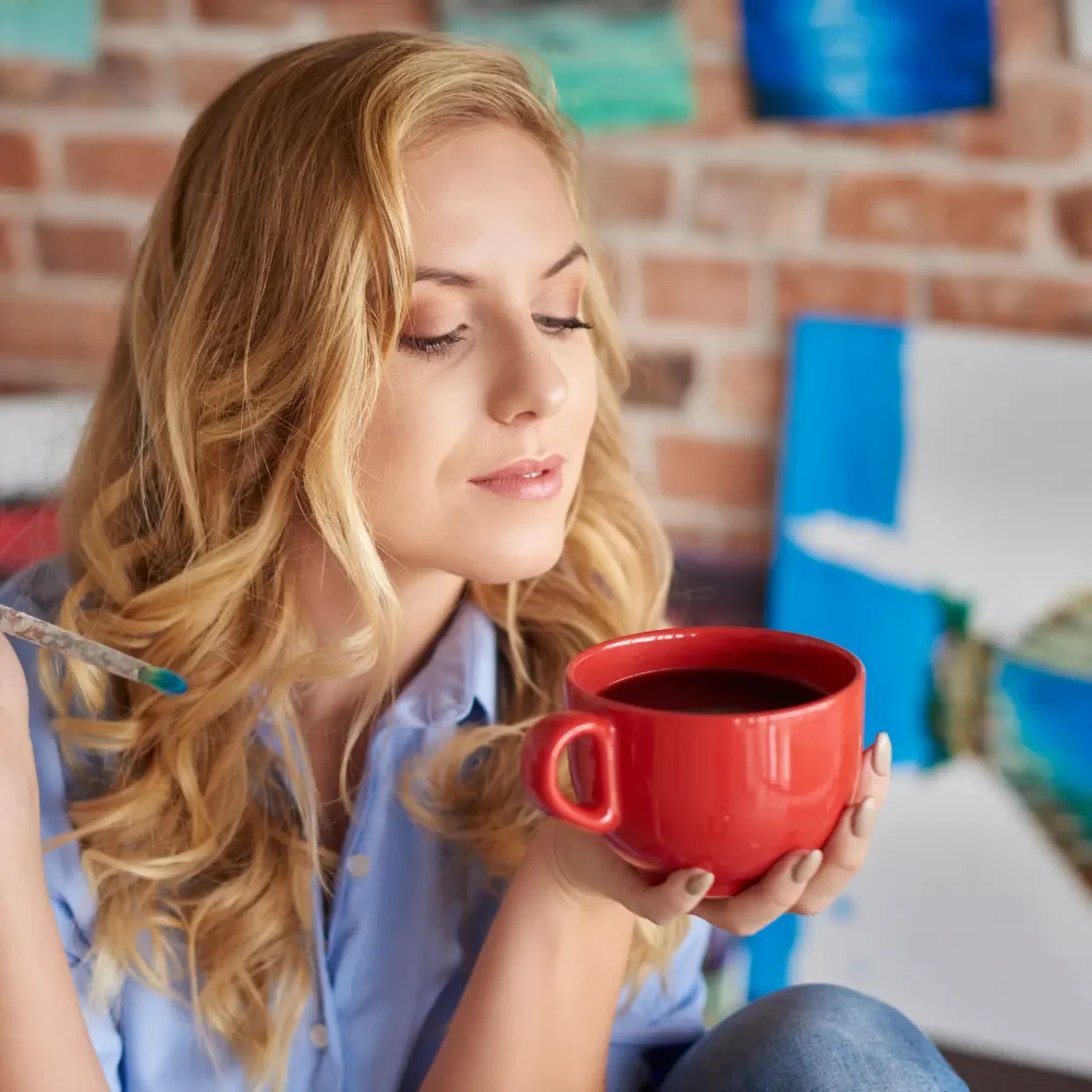
The olfactory allure of drip coffee sets the scene for a delightful sensory experience.
- Aroma Components: This drink can exude various aromatic compounds, from floral to fruity, nutty to chocolatey. These are often more pronounced in a freshly brewed pot.
- Experience: For many, the aroma of this concoction wafting through the home is comforting, signaling the start of a new day.
Coffee Beans Selection
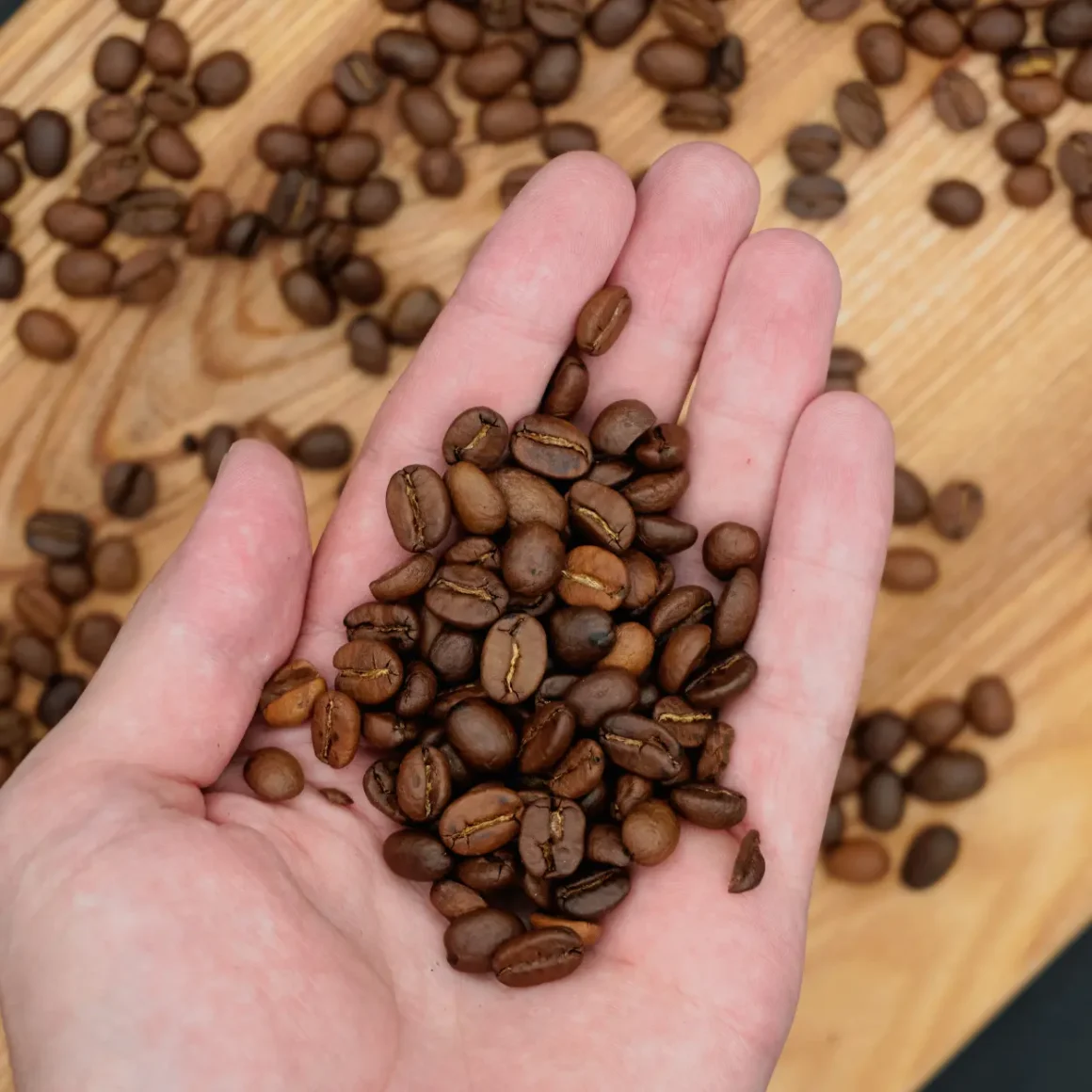
Selecting the right coffee beans is pivotal to crafting the perfect cup of drip coffee
- Bean Types: While any coffee bean can be used for filtered coffee, medium and medium-dark roasts are often favored for their balanced profiles and aromatic qualities.
- Grind Size: A medium grind is typically recommended for drip coffee to achieve optimal extraction without over-extracting and causing bitterness.
Espresso Delight: Bold and Intense Flavors
Espresso usually served in small espresso cups, delivers a powerful punch of flavors and aromas in a concentrated form.
Intense and Concentrated
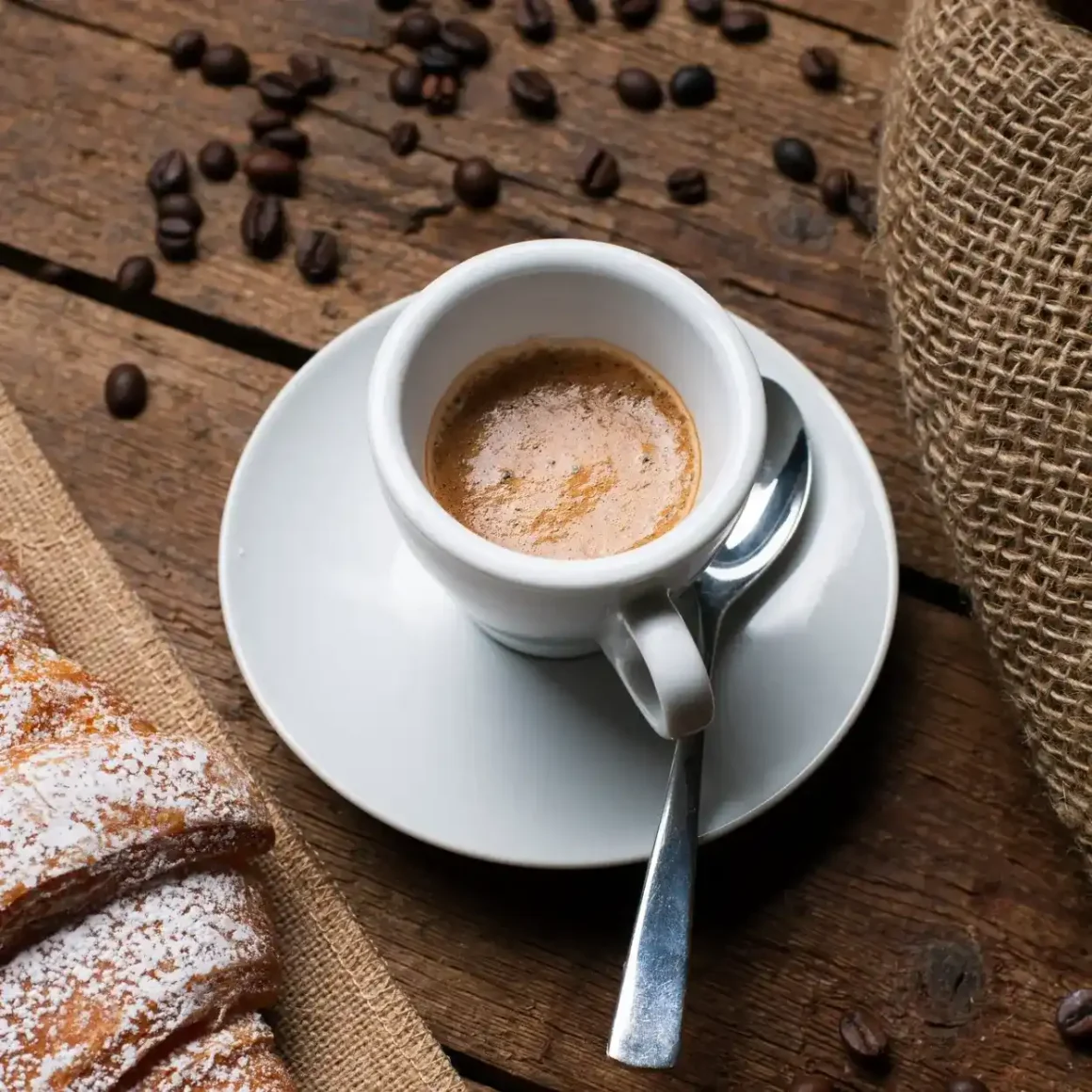
Dive deep into the dynamic world of this delightful beverage, where every sip is a potent punch of flavor.
- Taste Profile: Espresso is renowned for its bold, robust flavor, encapsulating the essence of the coffee bean in a compact, intense shot.
- Extraction: The high pressure and heat applied in this drink brewing extract a range of flavors rapidly, leading to a brew that’s richer and more potent than filtered coffee.
Crema
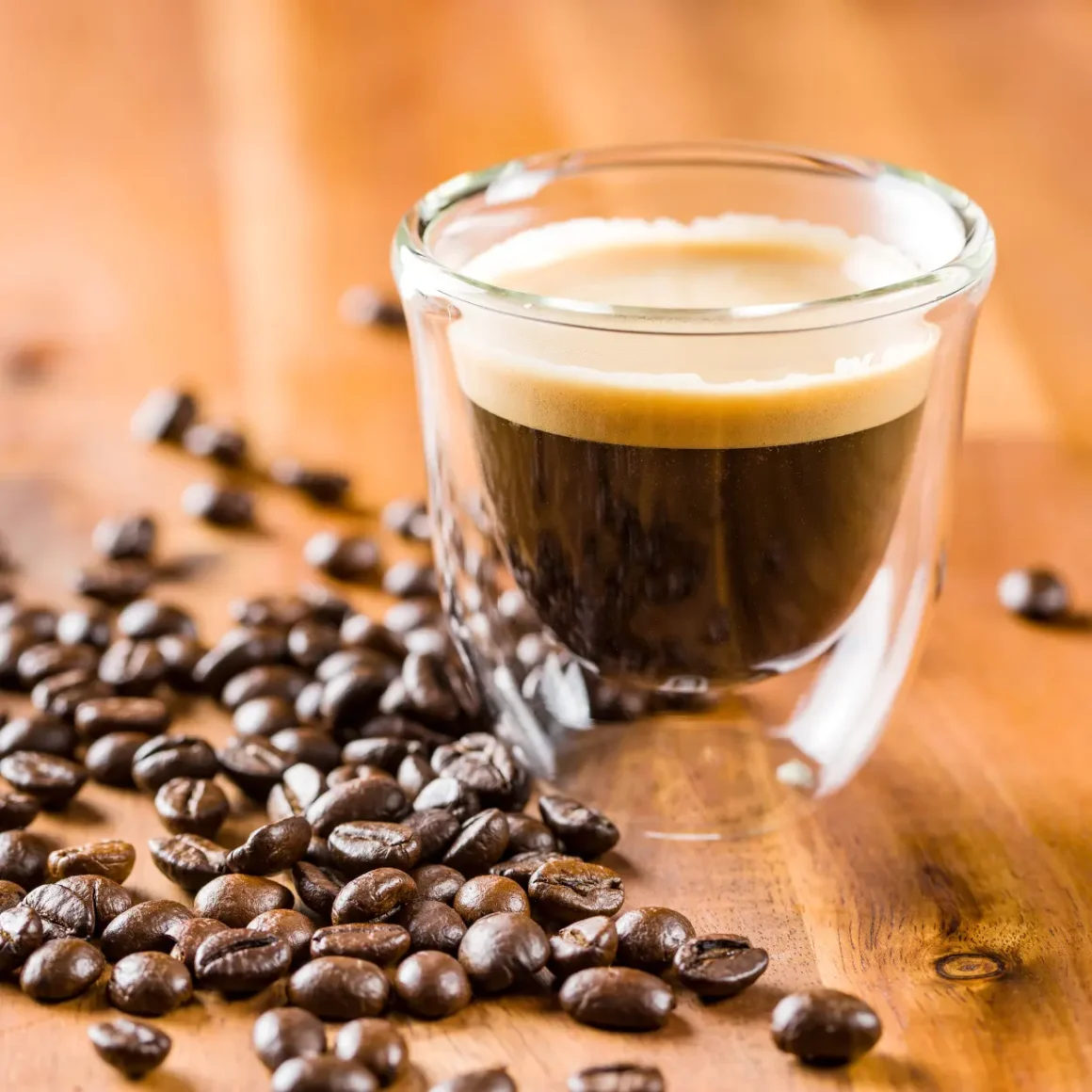
The golden crown atop an espresso, the crema speaks volumes about the quality of the brew.
- What is it?: Crema is the golden, frothy layer on top of a freshly brewed espresso shot. It’s formed by the emulsion of coffee oils and air, and it’s a sign of a well-made espresso.
- Taste Contribution: Crema adds a slight bitterness to this beverage, balancing out its strong flavor and adding texture.
Espresso Beans
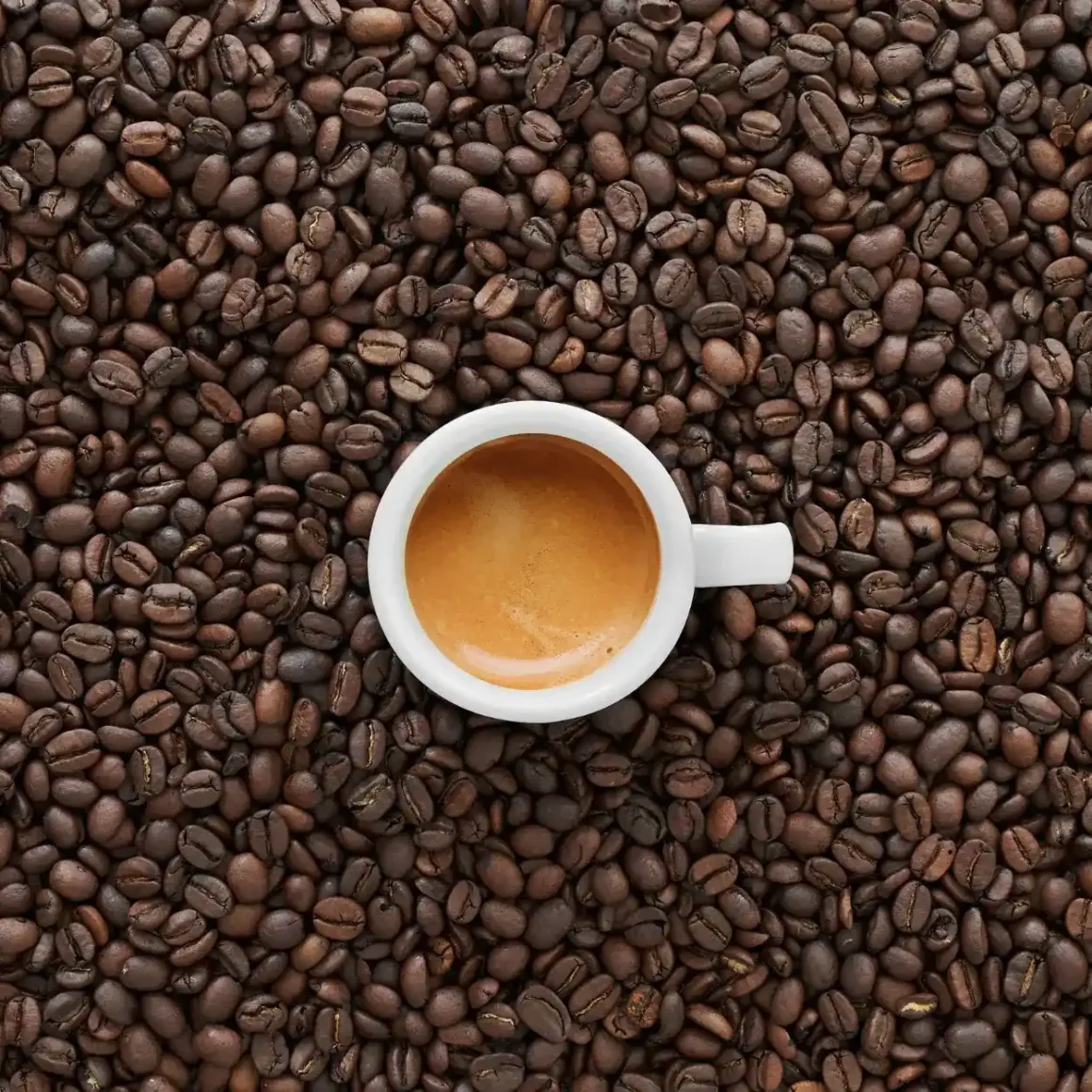
Choosing the right beans is paramount to crafting the quintessential espresso shot.
- Selection: Espresso beans are typically a dark roast, chosen for their bold flavors and ability to produce a rich crema. However, any bean can technically be used for espresso, with the grind size and brewing technique being more critical.
- Grind Size: As previously discussed, a fine grind is essential for espresso to achieve the necessary resistance against the pressurized water and extract the full flavor profile.
Drip vs Espresso: Finding Your Taste Palate
When it comes to choosing between drip coffee and espresso, it’s not just about the caffeine content or brewing method. It’s about the flavors and aromas that resonate with you. Some might find solace in the mild, comforting embrace of drip coffee, while others might seek the bold, intense thrill that espresso offers. Experimenting with both can help you identify which brew aligns best with your taste buds, ensuring every coffee moment is a delightful one.
Drip Coffee vs Espresso: Caffeine Content
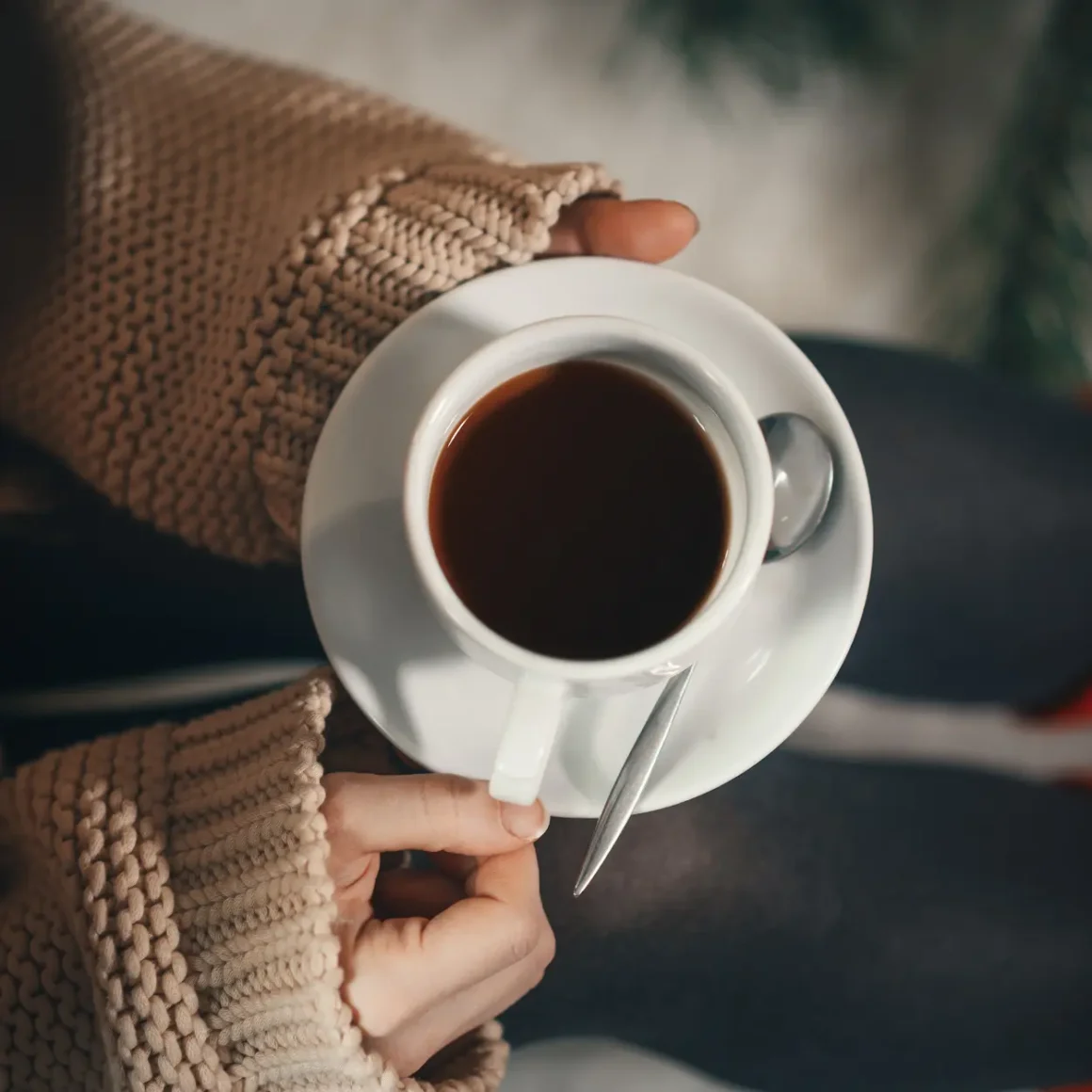
Caffeine, the stimulant found in coffee, plays a crucial role in how coffee affects our energy levels, mood, and overall experience. The amount of caffeine varies between brewing methods and specific drinks. Understanding the caffeine content in both drip coffee and espresso can help individuals cater to their preferences and health needs.
Drip Coffee
The classic drip coffee, whether brewed at home or ordered at a café, is a favorite for its steady release of caffeine, offering a prolonged and sustained energy boost.
Standard Servings
Embark on the journey of understanding the caffeine dynamics in your daily cup.
- Measurement: A standard 8-ounce (240 ml) cup of drip coffee typically contains between 80 to 120 mg of caffeine, though this can vary based on the coffee bean type and roast.
- Factors Affecting Caffeine: The coffee’s origin, processing method, and roast level can all influence caffeine levels. Lighter roasts generally contain slightly more caffeine than darker roasts.
Decaf Options
Thinking of cutting down on caffeine without quitting coffee? Here’s what you need to know.
- Caffeine Amount: Decaffeinated coffee doesn’t mean caffeine-free. A standard 8-ounce cup of decaf drip coffee can still contain anywhere from 2 to 5 mg of caffeine.
- Brewing Methods: Various methods are used to decaffeinate coffee beans, including the Swiss Water Process, which is chemical-free, and the Direct Method, which uses solvents. (2), (3)
Brewing Time Impact
Discover how brewing time can influence not only flavor but caffeine content as well.
- Extraction: The longer the brewing time, the more caffeine is extracted. However, this also means a stronger flavor, which might not be palatable for everyone.
- Comparisons: Compared to methods like the Nespresso coffee machine technique or other fast-brew methods, traditional drip coffee might offer slightly more caffeine due to its longer brewing time.
Espresso
When pondering what is espresso? it’s essential to recognize it as a concentrated coffee brew obtained by pushing warm water through finely crushed beans under pressure.
Espresso Shot Size
Dive into the world of these delicacy measurements and the caffeine punch each delivers.
- Single Shot: A single shot of espresso, roughly 1 ounce (30 ml), generally contains about 63 mg of caffeine. However, this varies depending on factors like the coffee bean and the precise brewing method.
- Double Shot: Commonly used in lattes and cappuccinos, a double shot (about 2 ounces) will naturally contain approximately double the caffeine of a single shot, but this can be slightly less than exactly double due to extraction efficiency.
Espresso vs. Americano
Explore the subtle variations between the robust espresso and its diluted counterpart.
- Dilution: The primary difference between espresso and americano is the water content. An Americano is made by diluting a shot (or more) of espresso with water, making its flavor milder.
- Caffeine Content: The caffeine content in an Americano will be nearly identical to the espresso shots used to make it. The dilution doesn’t affect the caffeine, but it does spread it over a larger volume.
Espresso and Health
Discover how the intense flavor of espresso translates into its impact on health.
- Digestion: Espresso can stimulate stomach acid production, which can be either beneficial for digestion or problematic for those with conditions like acid reflux.
- Antioxidants: Espresso contains antioxidants that can help neutralize harmful free radicals in the body. The concentration makes it a potent source, but moderation is key, as excessive caffeine can have adverse effects.
In summary, while both drip coffee and espresso provide caffeine, their concentrations and the manner in which they deliver that caffeine differ. Personal preferences, along with considerations about caffeine tolerance and desired effects, can guide one’s choice between these two beloved coffee brewing methods.
Serving Styles
The art of coffee doesn’t end at brewing. How coffee is served, the vessels chosen, the garnishes and additives – these all play a role in the coffee-drinking experience. Both drip coffee and espresso have their unique serving styles, celebrating the essence and culture of each brew.
Drip Coffee
The aroma of freshly brewed drip coffee is a universal wake-up call in many households and workplaces. This method is cherished for its simplicity, versatility, and the communal experience it offers.
Mug or Cup
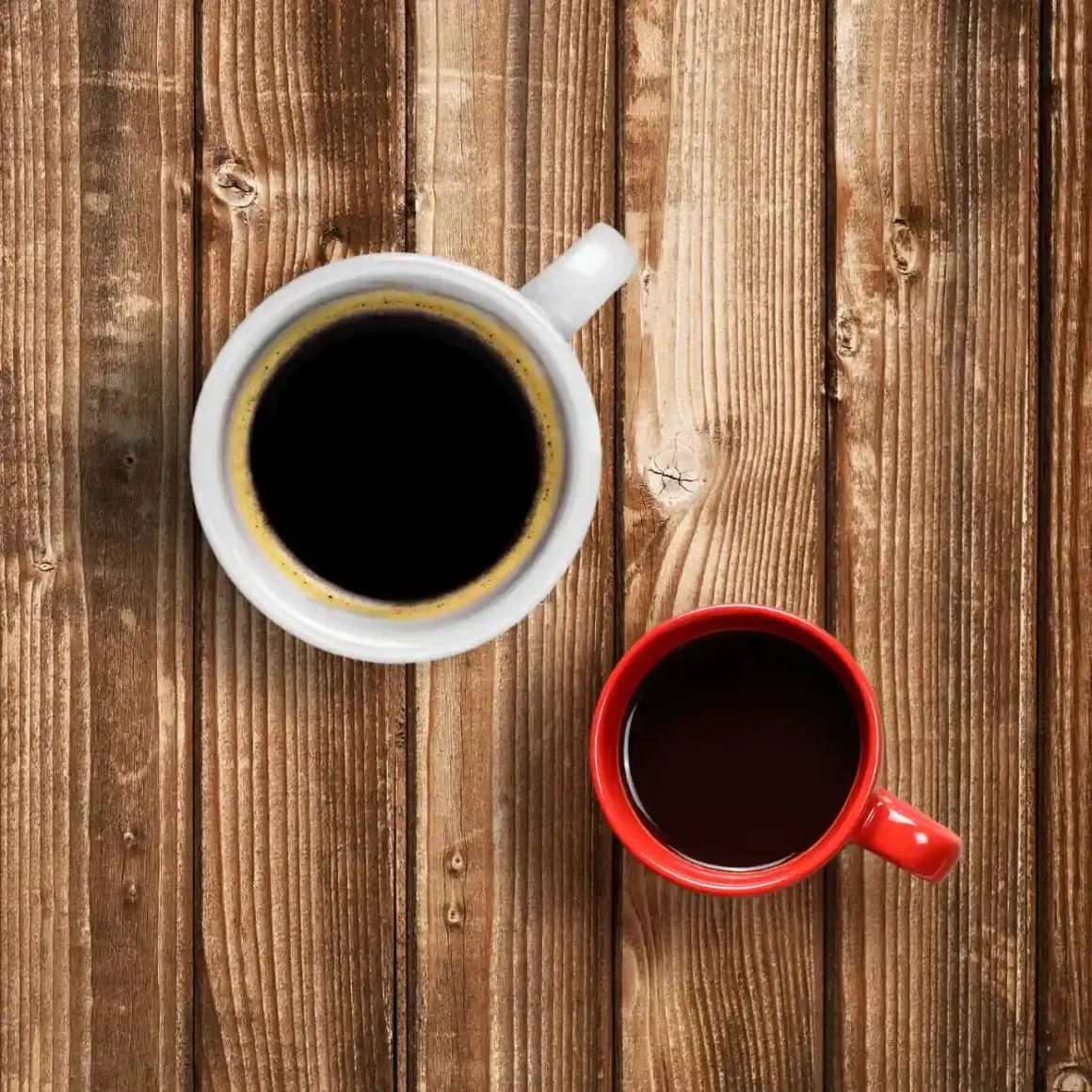
Dive into the typical vessels designed for savoring your drip coffee.
- Volume: As mentioned before, drip coffee is typically served in larger volumes than espresso. Whether it’s an 8-ounce cup or a large 16-ounce mug, it’s designed for slow sipping and extended enjoyment.
- Material: Many prefer ceramic or porcelain mugs for drip coffee because they retain heat well. Stainless steel travel mugs are also popular for those on the go.
Coffee Additives
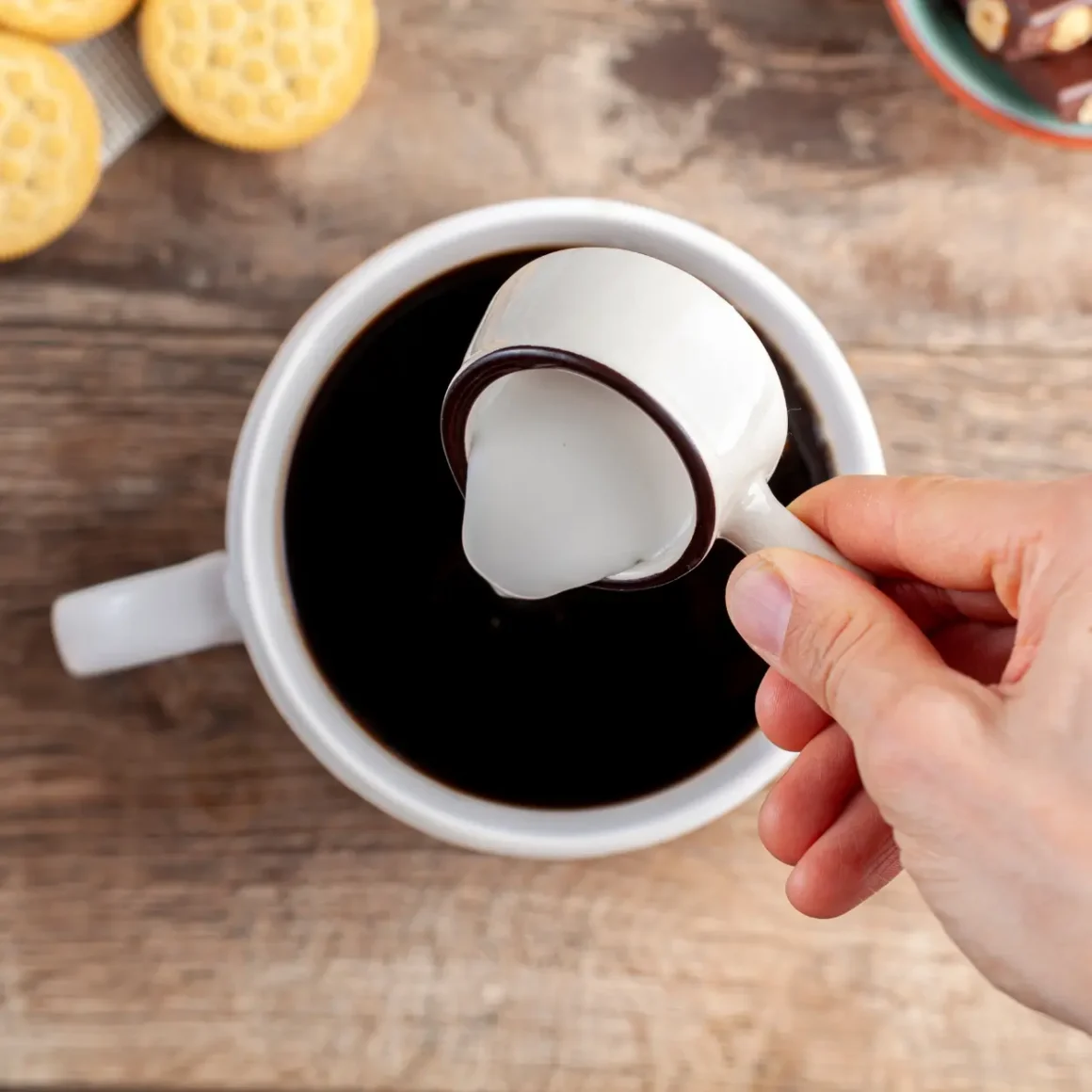
Explore the myriad of options available to customize your cup of joe.
- Creamers: From dairy milk to oat milk, almond milk, and other alternatives, there’s a wide range of creamers available to lighten and enrich the coffee.
- Sweeteners: Sugar, honey, agave nectar, and artificial sweeteners can all be used to adjust the sweetness level.
- Spices: A sprinkle of cinnamon or nutmeg can elevate the flavor profile, especially during colder months.
Coffee Variations
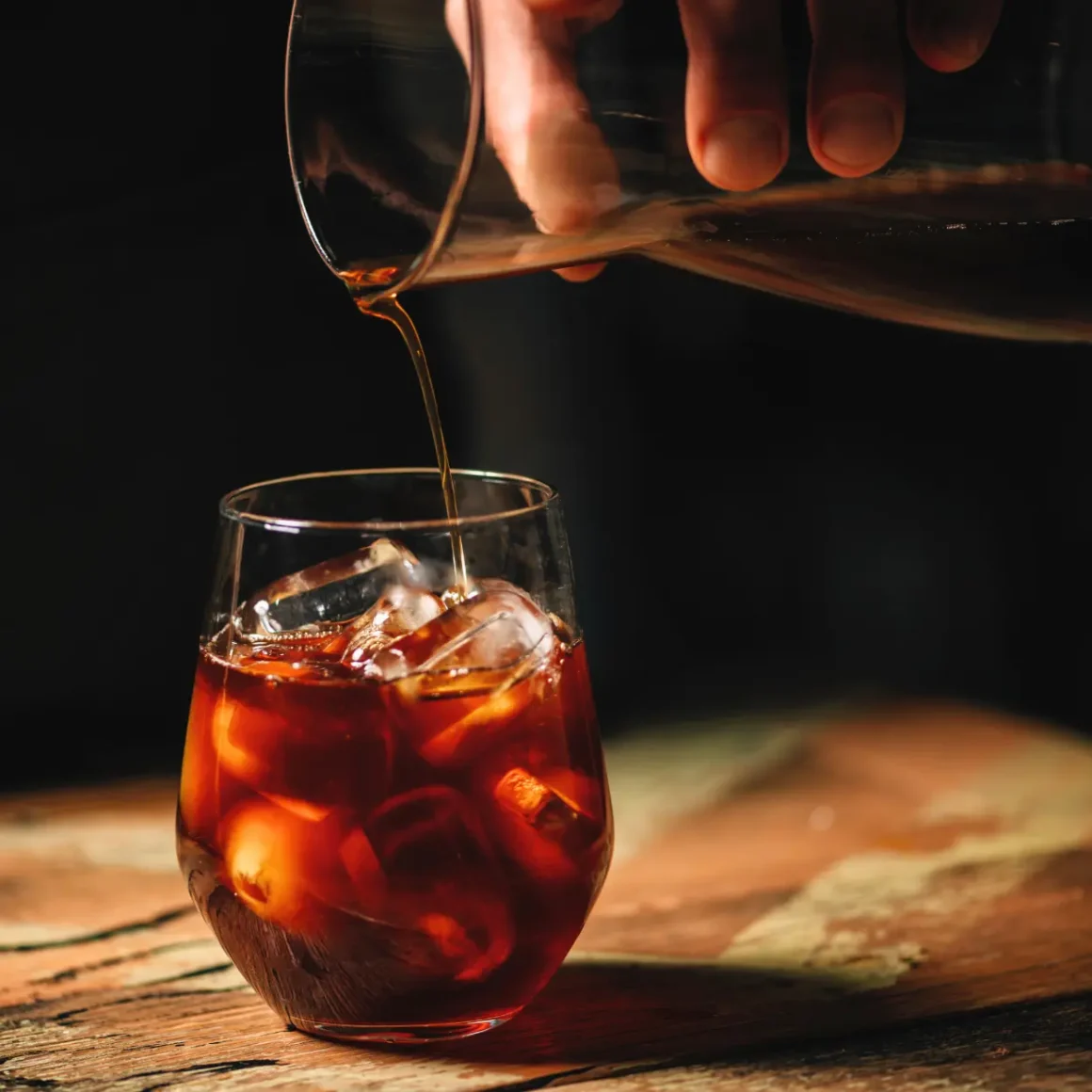
Discover the delightful twists to your standard brewed coffee.
- Iced Coffee: Brewed coffee cooled down and served over ice, often sweetened and mixed with milk or cream.
- Cold Brew: Coffee brewed coffee with cold water over an extended period, usually 12-24 hours, leading to a smoother, less acidic beverage.
Espresso
Espresso is more than just a coffee style; it’s a culture. From the tiny espresso cups to the artistry of espresso drinks, every detail contributes to the overall experience.
Espresso Shot

Delve deep into the world of the powerful espresso shot.
- Serving Size: A standard espresso shot is about 1 ounce (30 ml). Variations like the ristretto shot use less water, leading to a more concentrated flavor, while the lungo coffee uses more water for a diluted taste.
- Cup Material: Espresso is typically served in small ceramic or porcelain espresso cups (demitasse cups) that help maintain the coffee’s temperature.
Espresso-Based Drinks
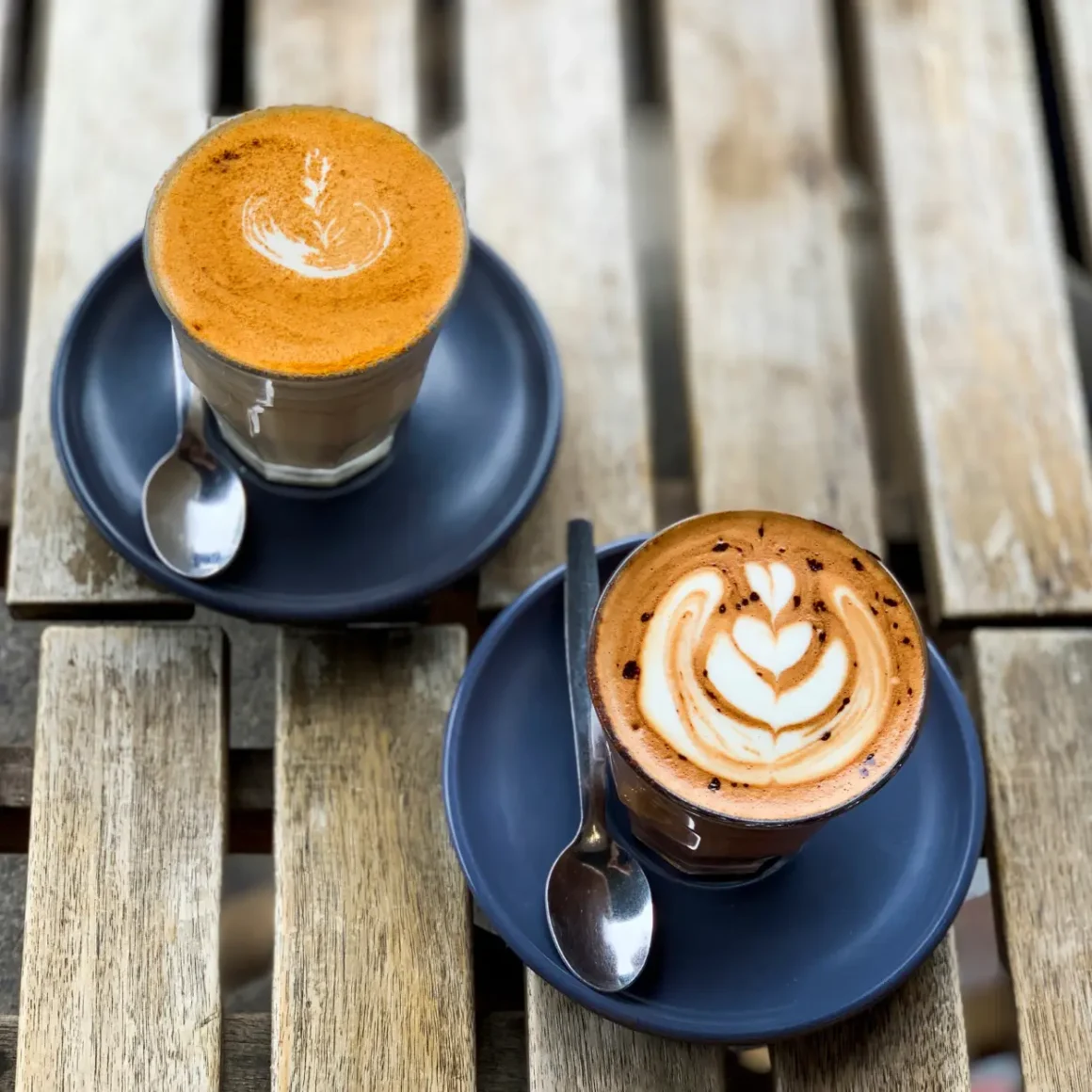
Uncover the plethora of drinks that owe their existence to the mighty espresso.
- Americano: An espresso diluted with hot water, striking a balance in the espresso vs americano debate for those who prefer a milder flavor.
- Cappuccino: Made with equal parts espresso, steamed milk, and frothed milk, this drink is a creamy delight topped with a milk foam dome.
- Latte: A combination of espresso and steamed milk with just a small amount of foam on top. Flavor syrups like vanilla or caramel can be added for a sweet twist.
- Mocha: Espresso, chocolate syrup, and steamed milk come together to create this delightful hybrid of coffee and hot cocoa.
Espresso Culture
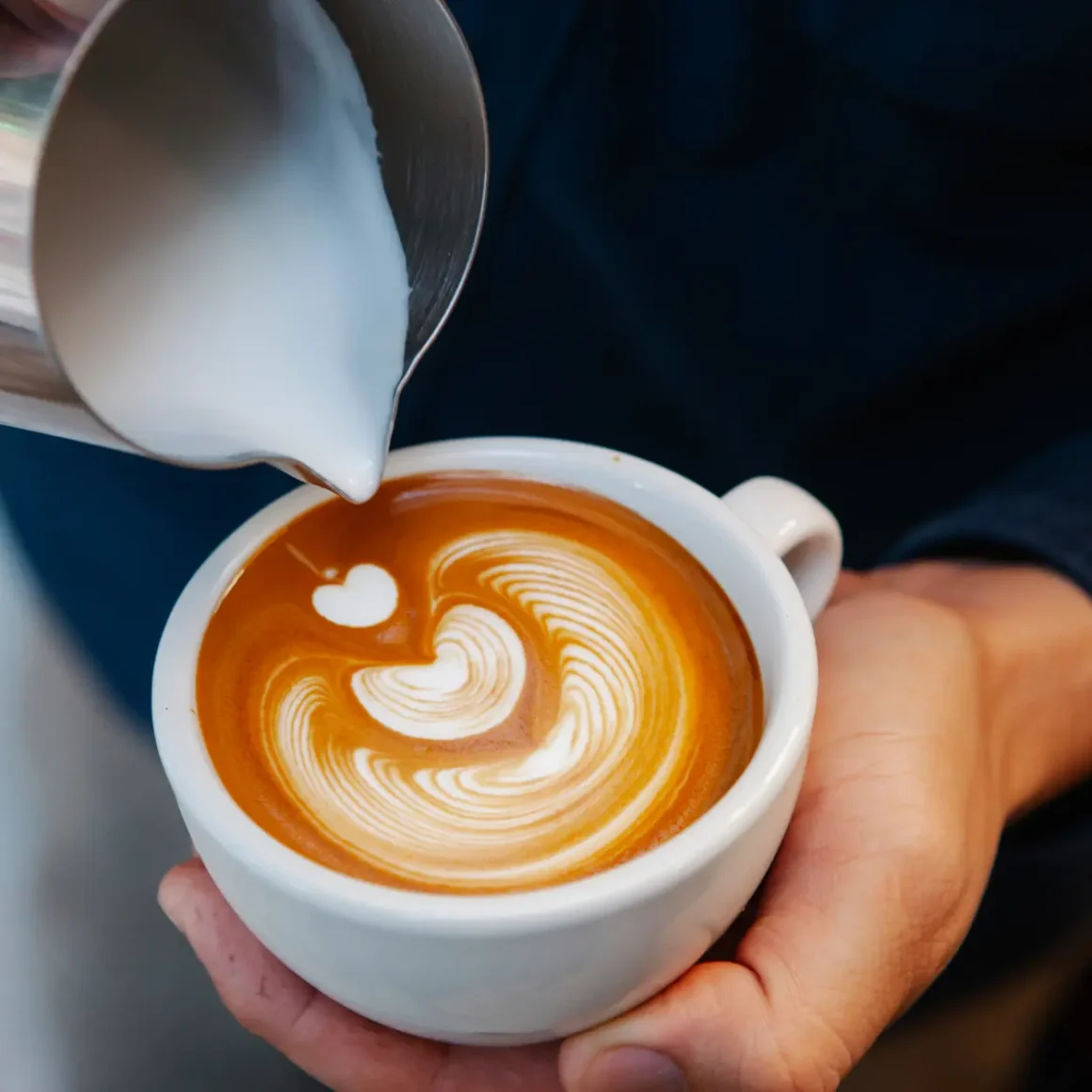
Step into the vibrant culture that surrounds the art of espresso.
- Social Experience: In many cultures, sipping an espresso is a communal activity, often accompanied by conversations, whether it’s a quick midday break or a prolonged evening chat.
- Artistry: Espresso drinks, especially those with milk, often come adorned with latte art, showcasing the barista’s skill and adding a visual delight to the coffee experience.
In essence, both drip coffee and espresso offer a plethora of serving styles, each catering to different preferences and occasions. Whether it’s the comforting embrace of a warm mug or the intense burst of flavor from espresso cups, the way we serve and consume coffee is a testament to its rich and varied culture.
Pros and Cons
Coffee enthusiasts often find themselves in the middle of the espresso vs drip coffee debate. Both brewing methods have their merits and shortcomings, and the choice often comes down to personal preference. Let’s delve into the pros and cons of each to provide clarity.
Drip Coffee: Pros and Cons
Drip coffee, the age-old brewing method, is a favorite for many because of its simplicity and consistency. But like all brewing methods, it has its strengths and weaknesses.
Pros:
- User-Friendly: Drip coffee makers are often straightforward to use. Just add water and coffee grounds, press a button, and wait.
- Consistent Results: Once you have your preferred coffee-to-water ratio, drip coffee machines provide consistent brews every time.
- Serve Multiple People: Many drip machines come with large carafes, making it easier to serve coffee to a group or have multiple servings ready.
- Mild Flavor: Drip coffee generally offers a well-rounded and less intense flavor, which many people find comforting and easy to drink.
Cons:
- Less Control: Unlike manual methods, standard drip machines offer less control over variables like brewing time or water temperature.
- Size and Space: Some machines can be bulky, taking up significant counter space.
- Maintenance: Regular cleaning is crucial to prevent mold growth and ensure the machine’s longevity.
Espresso Brewing: Pros and Cons
Espresso, the rich and robust coffee extract, has taken the world by storm, becoming the base for numerous popular coffee drinks. But what are its advantages and potential drawbacks?
Pros:
- Rich and Robust: Espresso shots are intense, concentrated, and packed with flavor.
- Versatility: Espresso serves as the base for a variety of drinks, from cappuccinos and lattes to mochas and americanos.
- Speed: Espresso machines, especially automatic ones, can produce shots relatively quickly, often in under a minute.
- Small Serving Size: Espresso packs a punch in a small volume, making it perfect for those who prefer a quick caffeine boost.
Cons:
- Cost: Quality espresso machines can be expensive, especially when compared to drip coffee makers.
- Learning Curve: Achieving the perfect espresso shot may require practice and an understanding of variables like grind size and tamping pressure.
- Maintenance: Espresso machines require regular cleaning and descaling to function optimally and extend their lifespan.
Drip vs Espresso: Which One to Choose?
The decision between drip coffee and espresso often boils down to individual preferences and daily routines:
- Flavor Profile: If you prefer a milder, larger volume of coffee, drip might be the way to go. But if you love robust, concentrated flavors, espresso could be your best bet.
- Time & Convenience: For those who appreciate the ritual of brewing and have time to spare, an espresso machine might be fulfilling. Conversely, if you want a straightforward method that can produce larger volumes at once, a drip coffee maker might be more suitable.
- Budget: While there are espresso machines available at various price points, a quality machine tends to be more expensive than a drip coffee maker.
Ultimately, whether you lean towards drip coffee or espresso, both methods offer delightful ways to enjoy the complexity and richness of coffee beans. Experiment with both, and you might just find that each has its own special place in your coffee routine.
Conclusion
In the grand tapestry of coffee culture, the espresso vs drip coffee debate illuminates the diverse preferences and rituals that make this beverage so universally loved. While espresso captivates with its concentrated vigor and versatility, drip coffee comforts with its familiar, gentle embrace. Whether you’re an aficionado seeking the nuanced complexities of a perfect shot or someone who relishes the calming ritual of a slow brew, there’s a place for both in the coffee universe. Ultimately, it’s not about which method is superior, but about how each individual finds their unique joy in the world of coffee. Whatever your choice, may every cup bring you closer to the heart of what makes coffee so special.
FAQ
What is the difference in brewing time between Drip Coffee and Espresso?
Espresso is brewed in seconds under high pressure, while drip coffee takes several minutes using gravity.
Which brewing method extracts more caffeine, drip coffee or espresso?
Per ounce, espresso generally contains more caffeine, but a standard serving of drip coffee often delivers more total caffeine because of its volume.
Which brewing method is more cost-effective: Drip Coffee or Espresso?
Drip coffee is generally more cost-effective, both in terms of equipment and per-serving cost
Can I make Espresso with a Drip Coffee maker?
No, espresso requires high pressure for brewing, which a standard drip coffee maker doesn't provide.
Are there health benefits associated with Drip Coffee or Espresso?
Both drip coffee and espresso offer similar health benefits, including antioxidants and improved cognitive functions, when consumed in moderation.
